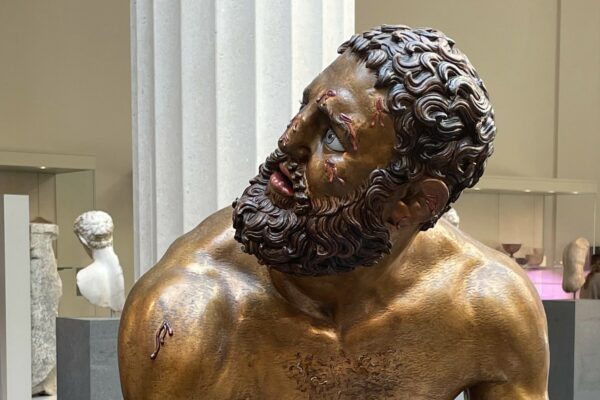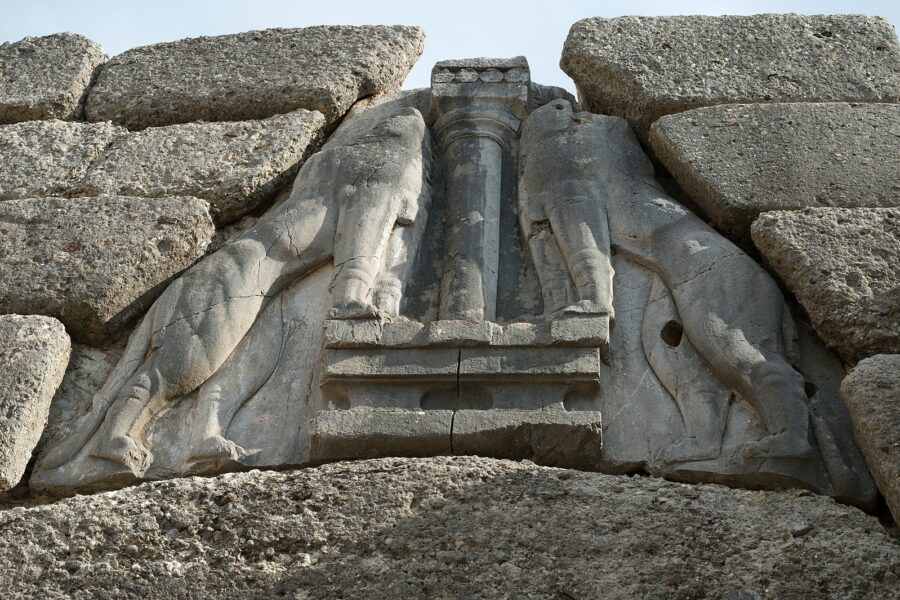
Is that a stylized Mycenaean column between two flanking felines above the Bronze Age gate at Mycenae, or are you just glad to see me?
Episode 51: In which Apollo muses on the nature of narrative art, and Hermes discovers ithyphallic motifs are the real visual classics.
This episode of Real Housewives of Mt. Olympus brought to you by the latest archaeological news on ArtNews.com – and by CLAS-A 418 Myth and Reality in Classical Art.
HERMES, GOD OF LOWER LEARNING AND GENERAL PAIN IN THE….: Bro! Best mortal news ever!
APOLLO, GOD OF HIGHER LEARNING AND MUSIC: Ugh, if you’re this excited, it can’t be good.
HERMES: They just uncovered the earliest visual narrative in the world! It’s in this super old site in Anatolia, like 11,000 years old, and it’s carved on this big ceremonial bench.

Mankind’s early attempts at interior decorating left much to be desired.
APOLLO: What’s a ceremonial bench, as opposed to just a bench?
HERMES: Well, one is an exciting archaeological find, and the other is just a stuff-holding-surface. Anyway, this bench has two continuous scenes on it…
APOLLO: Is that how the mortals define visual narrative? Two continuous scenes?
HERMES: Um, shouldn’t you know that? You’re the god of composing narratives.
APOLLO: Well, it’s just that “narrative” is really hard to define…
HERMES: I’m already bored. Getting back to me: guess what the Anatolian carvings show!
APOLLO: A battle? A procession of the gods? The birth of a leader?
HERMES: A man standing between two felines, and he’s grabbing his own penis!! (laughs uproariously)
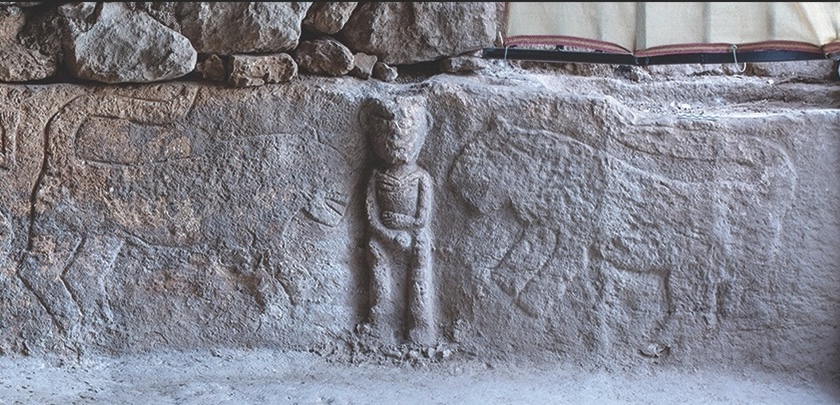
Still more coherent, sophisticated, and certainly humorous than recent Saturday Night Live.
APOLLO: (notably not laughing) How is that even vaguely a story?
HERMES: Hahaha I have no idea. I guess it’s a story because right next to it there’s another guy squatting and shaking something at a bull. Squatting! We all knows that that means…
APOLLO: How is that a story? With or without the other scene?
HERMES: Well, I could make a story up. See, there once was this guy from Nantucket…
APOLLO: Stop. I can’t see how there is evidence that this is a specific story, rather than just “things happening.” Or at least I can’t see how this is more clearly a specific story than the cave paintings in France, or Indonesia, or other places that are way older than this bench thing.
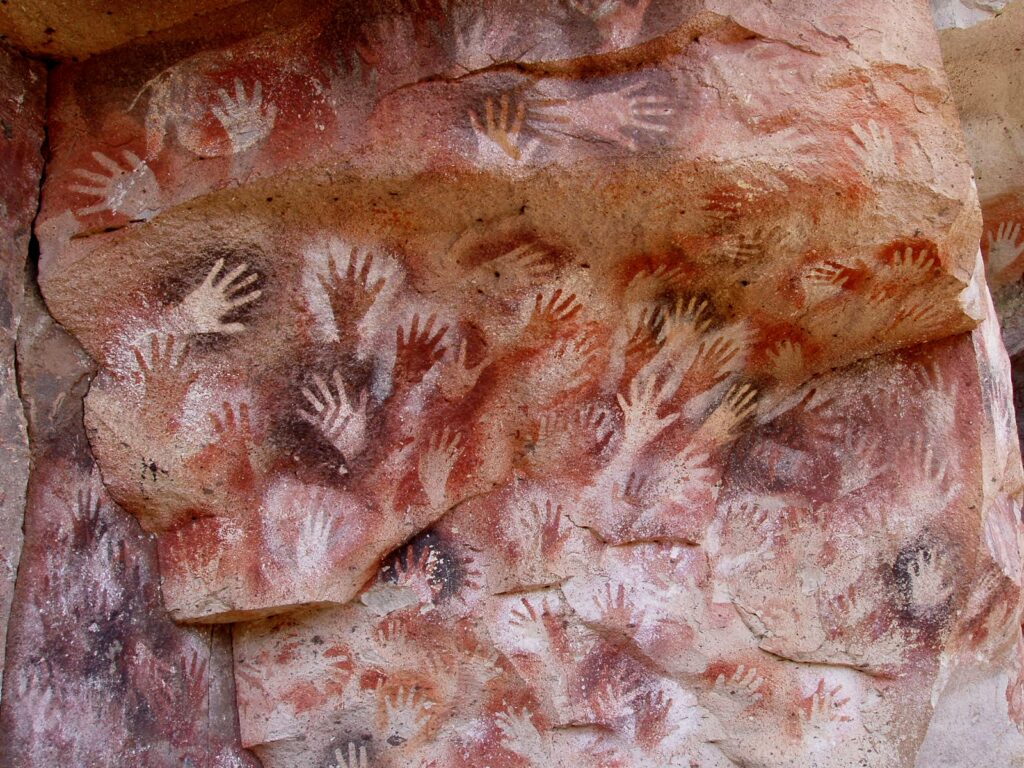
Much older cave paintings would like a word.
HERMES: Look at Mr. Scholar here, knowing all these facts. It’s like you think you’re the god of history or something.
APOLLO: I am the god of history. Come to think of it, on the bench carving, is the man even interacting with the felines?
HERMES: I mean, you can’t want me to answer that question.
APOLLO: You would have to have clear interaction, otherwise it would just be two felines flanking a central figure, which is a frequent motif that you see indicating power, but not really a story. And the central figure isn’t really doing anything you don’t see on one of those herms you love…wait a second, did you steal that idea from this culture?
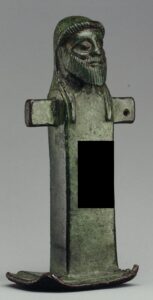
Bet you didn’t guess this would be one of the most frequent recurring motifs in human art. Then again, maybe you did.
HERMES: Some god had to invent plagiarism. And Tinder.
Share on Instagram, or really wherever you want.
To explore how we recognize early evidence for ancient story-telling (or at least think we do), look for CLAS-A 418 Myth and Reality in Classical Art, coming up Fall 2023, no previous experience required! Or to learn about how ancient Greeks and Romans decorated their crossroads and gardens with…well-endowed heads on sticks, check out CLAS-C 419 Art and Archaeology of Pompeii, coming up Spring 2025, also with no pre-reqs. Can’t get enough of Ancient Greece and Rome? Earn a Classics Minor in just 15 credits!


